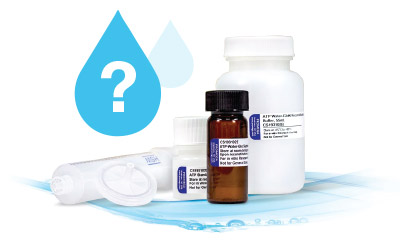Solving the Biggest Problem in Seawater Desalination
by Johanna Lee
When Dr. Motasem Abushaban
started graduate school in 2012 at the IHE Delft Institute for Water Education
in the Netherlands, he knew what he wanted to study. He grew up in Palestine, where
there is a severe water crisis. “We don't have sufficient safe fresh water. It
seems that our only option is to desalinate seawater in order to have drinkable
water. That's why I was interested in seawater desalination,” he says. Water
scarcity is a global issue, and desalination has become the sole water source
for many coastal countries without access to freshwater. The main goal of Motasem’s
research is to solve the most serious problem in the operation of desalination: membrane biofouling.
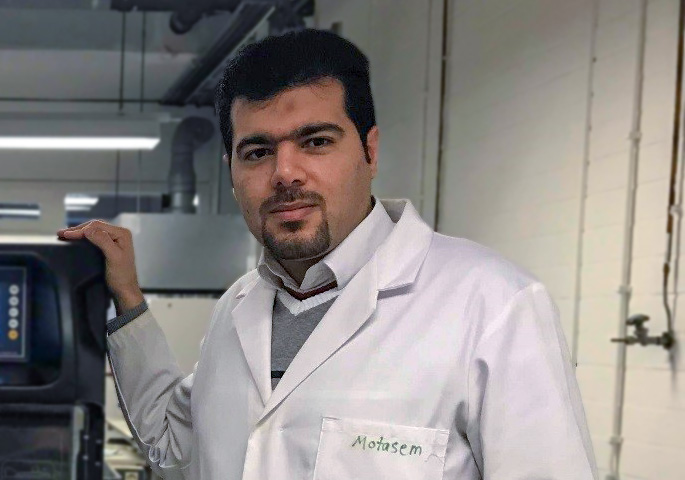
Dr. Motasem Abushaban, former graduate student at IHE Delft.
The Problem of Membrane Biofouling
Most desalination facilities produce drinking water through
reverse osmosis (RO), in which seawater is passed through RO membrane filters, removing
salt and biomass from seawater. Membrane biofouling occurs when bacteria from seawater
sticks to the RO membrane and forms a layer of biofilm, reducing water flow. As
biofilm clogs the pores on the membrane, more pressure is required for water to
pass through, reducing production efficiency and raising operating costs. Once
the membrane is severely clogged, it needs to be cleaned or replaced—both time-consuming
and costly operations. “It’s not only about the cost of the membrane or the
cost of operation. There’s also an environmental impact,” says Motasem. To
clean the biofilm, you need to use cleaning chemicals, which enter the membrane
system and are discharged back into the sea, potentially harming the marine
environment.
The best way to minimize biofilm from forming in the first
place is to reduce the amount of biomass and nutrients in seawater entering the
RO filter. This can be done by improving pretreatment procedures. But how can
you tell whether the pretreatment process is working? Motasem realized that he
needed a fast method to effectively measure bacterial growth potential in seawater.

Measuring Biomass in Seawater
There are several methods for measuring bacteria in seawater. The most common method, heterotrophic plate count (HPC), involves spreading the water sample on a culture plate, waiting for bacterial colonies to grow, and then counting the number of colonies. Unfortunately, this growth period can take up to 21 days. By the time you get results, biofilm may have already clogged the membranes. Another issue with HPC is that you can only count the bacterial colonies capable of growing on a culture plate (1–10% of all bacteria species), which means a majority of bacteria are missed from this method.
A faster method
called flow cytometry involves running samples through a specialized instrument
that automatically counts the number of bacteria in the sample. However, the
number of bacteria does not necessarily reflect the biological activity of
bacteria. “We can have one million bacteria in seawater, but it means nothing
if these bacteria are not active,” says Motasem. Another issue with flow
cytometry is that it often underestimates the number of bacteria if they are
clumped together—it might count a clump of a few thousand bacteria as one.
The ideal method for Motasem’s application would be fast,
reliable and measures all active biomass. This is possible with an assay that
measures the concentration of a tiny molecule called adenosine triphosphate
(ATP)—the energy currency of all living cells. “Through ATP testing, we can
know the activity of the bacteria. Maybe there’s only 1,000, but they could be
very active,” says Motasem. He found that there were ATP testing kits available
for testing freshwater, such as drinking water. However, they did not work with
seawater because salt interfered with the reaction. “We were looking for a way to measure ATP in seawater because it's clearly a very
good method; very fast, very robust. It gives a lot of information within
seconds.”
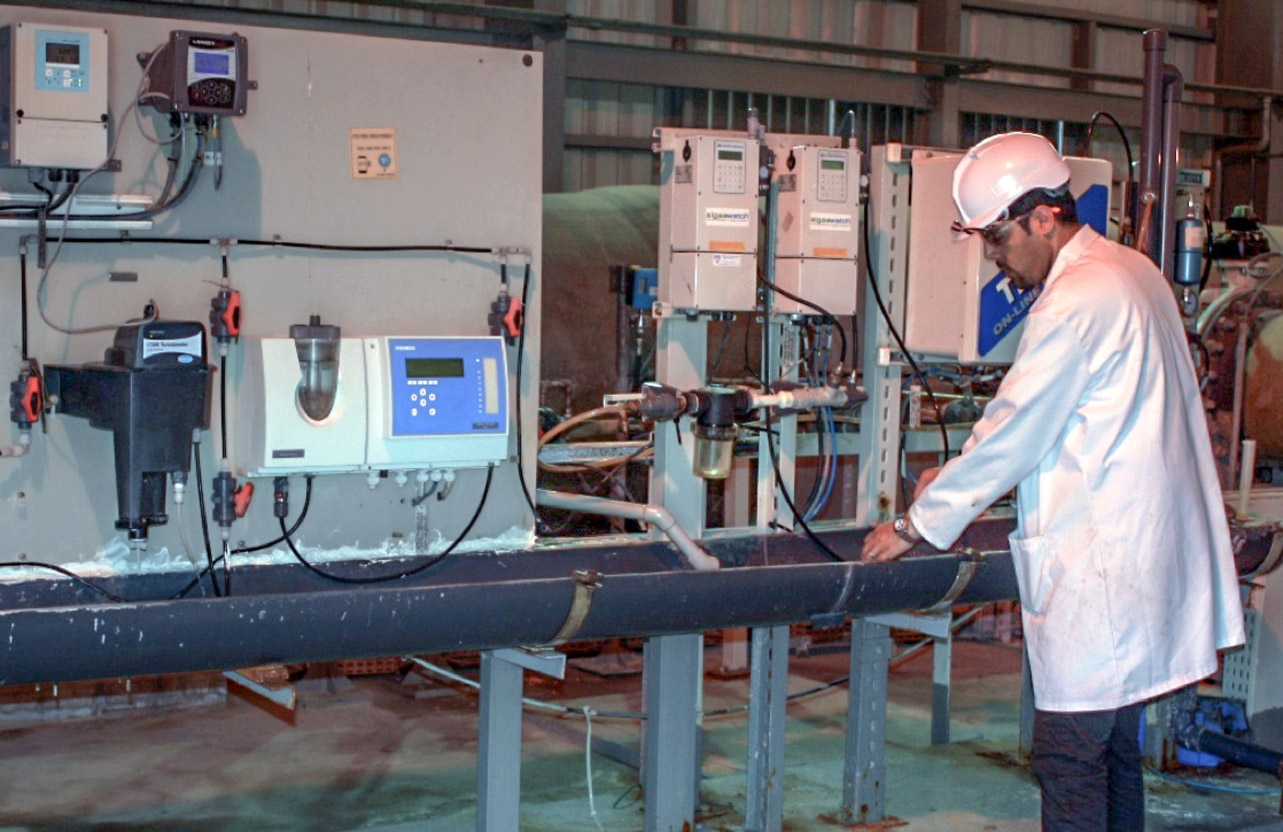
Dr. Motasem Abushaban collects seawater samples from a sampling point of a full-scale seawater desalination plant in Oman.
Developing an ATP Assay for Seawater
While researching ATP, Motasem heard of a seminar held at Promega. He attended the seminar and talked with Promega representatives about the need for an ATP test that works for seawater. “The Promega people were very excited about it. They started having some ideas.” Motasem began collaborating with Promega Senior Research Scientist, Dr. Subhanjan Mondal, to develop the perfect reagents for his needs. “We initially tried to repurpose existing products. But we soon realized we needed to completely redesign the kit,” says Subhanjan.
Promega reformulated the reagents and shipped them to Motasem for testing. It took two years and ten on-site visits until the reagents were finalized and developed into a water testing kit called “Water-Glo”. The method involved directly adding lysis reagent into a sample of seawater, incubate for 5 minutes, add detection reagent, then measure signal with a luminometer. Motasem tested this direct method in three full-scale desalination plants located in Oman, United Arab Emirates and Australia, and another pilot-scale plant in the Netherlands. “It was simple, fast and accurate,” says Motasem. The Water-Glo™ kit also detects much lower concentrations of ATP (0.3 ng/L) than other kits.

Dr. Subhanjan Mondal working in the lab.
Motasem was pleased with this method, but he didn’t stop there. A problem with directly adding lysis reagent into seawater is that seawater conditions (e.g., iron, salinity and pH levels) can interfere with ATP detection. Thus, additional calibration is required every time seawater conditions change, which can be a tedious process. Motasem worked with Subhanjan to eliminate the calibration step altogether while using the same Water-Glo™ reagents. To do so, they developed a filtration-based method in which seawater is first pushed through a filter that captures the biomass. Lysis reagent is then used to extract ATP from the captured biomass. This filtration method was successfully used to monitor bacterial growth potential of seawater throughout pretreatment and filtrations steps in desalination plants.
The direct method and filtration method are useful in different situations. The direct method works best for monitoring the same seawater over time, when there are no changes in the water composition or matrix. However, if you are monitoring water as it goes through the pretreatment and desalination process, water properties change with added chemicals or filtration. In this case, the filtration method is preferable since you don’t have to prepare multiple calibration curves.
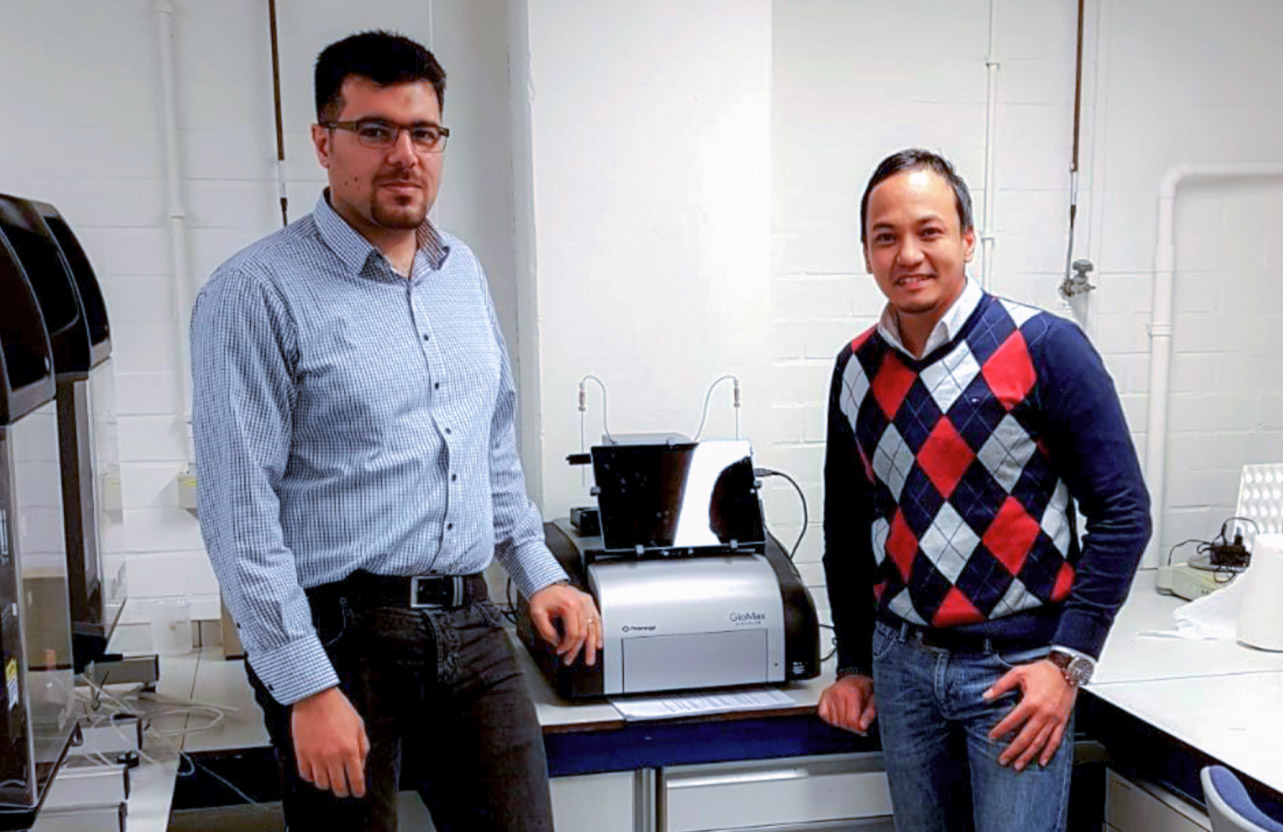
Dr. Motasem Abushaban (IHE Delft) and Duddy Oyib (Promega) working together to test Water-Glo™ reagents using the GloMax® Navigator Microplate Reader.
The Future of Membrane Fouling Prevention
Motasem is now using the Water-Glo™ Kit to test seawater in
desalination plants around the world. His goal is to collect as much data as
possible from varying samples of seawater to determine the threshold bacterial
growth potential that prevents membrane fouling. Currently, there is no standard biological
method to monitor pretreatment of desalination plants. Motasem hopes that once
this threshold value is determined, it can become an industry standard for membrane biofouling
prevention. Plant operators can continuously monitor pretreatment using
Water-Glo and quickly decide whether additional pretreatment is required. “Water-Glo
allows you to get real-time results instead of snapshots in time. With more
data, you can be proactive instead of reactive,” says Subhanjan.
Motasem is hopeful that his research will have a real impact
on the industry. Solving the problem of membrane biofouling will benefit the operation
of desalination plants around the world. It will also help millions of people
in his home country and other regions that need access to clean, affordable
water.
Related Resources
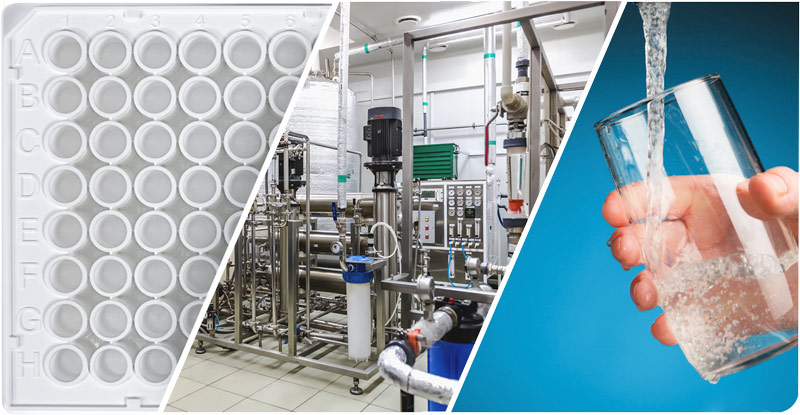
The Water-Glo™ System
Learn about the advantages of using the Water-Glo™ Kit to measure live microbe activity in water samples.
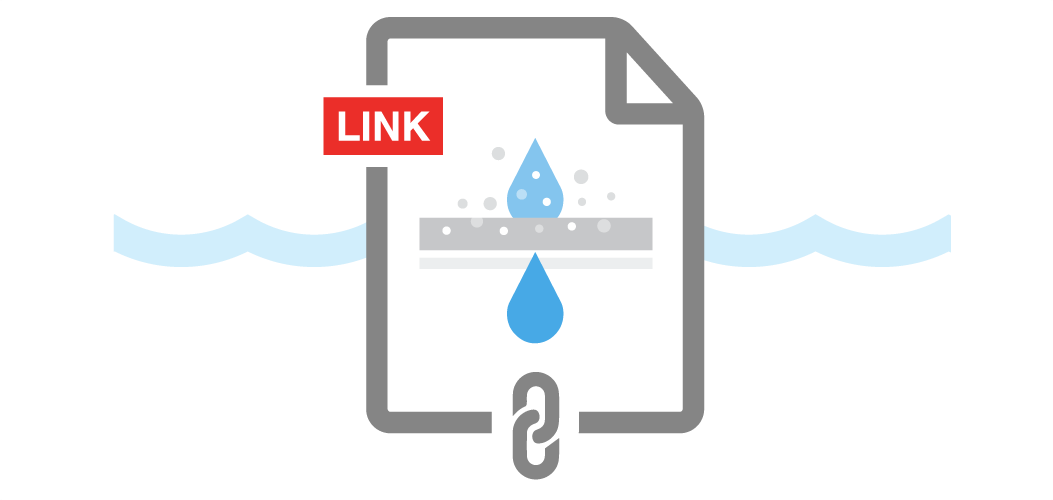
Direct Method for Measuring ATP in Seawater
Download this paper to learn how to measure ATP by directly adding reagents into seawater samples.

Filtration Method for Measuring ATP in Seawater
Read this paper to learn how to measure biomass by filtering seawater before ATP detection.
